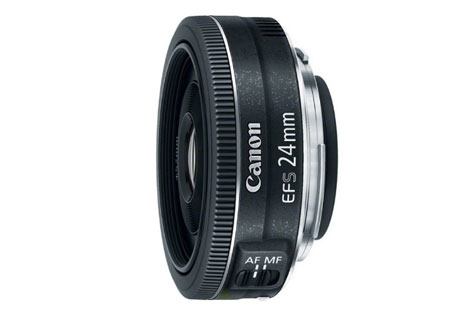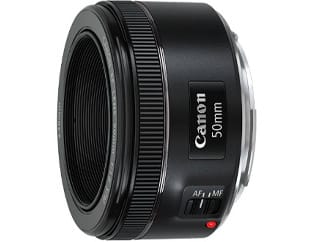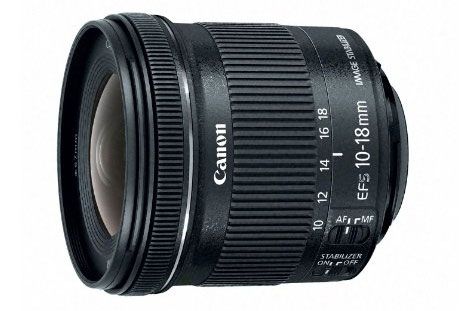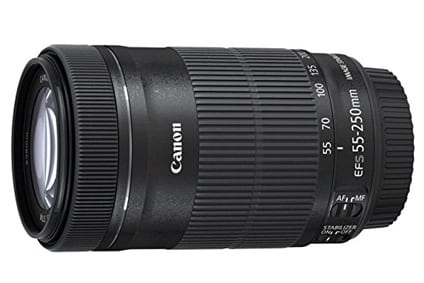These are the best lenses for Canon DSLRs under $300.
If you’ve never bought a lens before or are simply trying to keep the price to a minimum, there are quite a few different options available for you. In fact, you’ve got wide, standard and telephoto lenses to choose from, all under $300 with actually good image quality.
The first 3 picks are prime lenses. They’re lighter, smaller and also optically on a level of more expensive zoom lenses! The only tradeoff is you don’t have any zoom, but in return you get a significantly larger aperture that will make your background blurred and allow you to shoot in low light.
Plus, if you’ve never had a prime before, having no zoom isn’t as scary as you may think. It might even force you to think about your shots much more and really get that good composition.
If you have the 18-55mm kit lens but want something that will make your subjects “pop out” then definitely invest in a big aperture lens (f/2.8 or f/1.8).
Best Canon Lenses Under $300:
Canon EF-S 24mm f/2.8 STM
Canon EF 40mm f/2.8 STM
Canon EF 50mm f/1.8 STM
Canon EF-S 10-18mm f/4.5-5.6 IS STM
Canon EF-S 55-250mm f/4-5.6 IS STM
If you decide to buy anything after clicking on our Amazon links, you automatically support us. It’s what allows us to write guides such as this one and it does not cost you anything extra.
1. Canon EF-S 24mm f/2.8 STM
It looks funny, but the Canon EF-S 24mm f/2.8 STM is a “pancake” lens designed for the APS-C mount. It’s like the popular 40mm f/2.8 but with the crop factor in mind since it’s only compatible for APS-C cameras.
It’s so short you’ll often think you’re shooting with the body cap on. If you dislike carrying around a lot of lenses, or just want something super small to go with your DSLR, this is the best option.
Image quality as with most prime lenses is great, colors and contrast are also excellent for a lens that costs less than $150. On top of that, the STM technology is great for recording videos as it’s silent.
Mounted on APS-C it’s equivalent to a 38mm lens, and that almost makes it a normal/standard rather than a wideangle lens, but the length and f/2.8 are great for nature, traveling, indoor and low light situations. It displays so little distortion it’s hard to notice, especially when stopped down to f/4.
You can buy it at Amazon or see more reviews here.
2. Canon EF 40mm f/2.8 STM
For full frame users wanting a pancake lens, there’s the Canon EF 40mm f/2.8 STM. It was the first Canon pancake and is extremely popular because the size, price and quality combo is great.
If you’re not satisfied with even the smallest zooms, then the 40mm is literally your lightest option. You’re probably thinking there’s no sense in buying a cheap pancake to mount it on an expensive FF camera, but this lens is far from cheap when it comes to image quality. If you’ve got an APS-C though, then this 40mm “becomes” a 64mm lens and it’s more suited for portraits, concerts and isolating subjects relatively far away from you.
It’s usable at f/2.8 and delivers very sharp, good looking images with rich colors and contrast. You could easily mistake for a lens that costs 10x more.
The 40mm f/2.8 has barely any visible distortion so this is also not an issue, nor is chromatic aberration. You will notice some vignetting if photographing a bright background with f/2.8, but it can easily be fixed and is understandable at this price.
If you record videos the STM technology is good so you don’t accidentally get any noise from the focusing on your videos. Dpreview gave it a 84% score and also recommends it to those looking for a compact lens.
You can buy it at Amazon or see more reviews here.
3. Canon EF 50mm f/1.8 STM
You will find the Canon EF 50mm f/1.8 STM in almost all of our lens guides. Because of its large aperture and 50mm focal length, it’s perfect for both APS-C and FF portrait shooters. Plus, it’s actually the cheapest Canon lens, it costs less than both f/2.8 primes above!
Why the 50mm? It was released in 2013 and replaces the old, also cheap 50mm f/1.8 II, but comes with improved build quality, quieter AF and less optical issues. It costs around $125 yet the quality of this prime is far beyond how little you pay for it. There’s also a Canon 50mm f/1.4 that costs 3x more, but with the new f/1.8 we don’t find the extra price to be worth it (same focus speed, same quality).
With an aperture of f/1.8, you can really blur the background and make your subject pop. The longer your focal length, the further away from your subject you need to be, which also makes the depth of field even shallower.
In most of our shots the lens performed really good completely wide open, with little to no chromatic aberration. Stopping down to f/2.2-f/2.8 makes everything even better, but you can easily use it at f/1.8 for low light situations, or blurring the background. Concerts, weddings, everyday stuff, indoor action, you name it.
If you ever plan on recording videos as well, you’ll be happy to know that the STM technology, combined with a DSLR that has Dual Pixel AF technology, makes videos look awesome thanks to accurate AF.
Just like its predecessor, the new 50mm is extremely light and small; 5.6 oz (159g) and 2.7 x 1.5″ (69.2 x 39.3mm). Hands down the best bang for the buck from Canon.
You can buy it at Amazon or see more reviews here.
4. Canon EF-S 10-18mm f/4.5-5.6 IS STM
The Canon EF-S 10-18mm f/4.5-5.6 IS STM is your widest Canon zoom if you’re using an APS-C DSLR. This means any camera between the Canon T6 and 7D Mark II.
When mounted, its field of view is equivalent to a 16-29mm lens on full frame, and that’s the wide angle range most landscape photographers use. It’s great for architecture and indoor photography too, and it’s an excellent compact lens to take with you when travelling. If you have an 18-55mm kit lens but often wish for something even wider, this is your best pick!
Optically, it performs very well and delivers sharp images. It replaces the 10-22mm, an older but more expensive lens, and they both have identical image quality. The 10-18mm also incorporates an STM type motor for more silent focusing, making it great for video shooters relying on silent auto focus.
If you’ve never owned a wideangle zoom before, you should get the 10-18mm, it’s fun and extremely wide.
You can buy it at Amazon or see more reviews here.
5. Canon EF-S 55-250mm f/4-5.6 IS STM
The Canon EF-S 55-250mm f/4-5.6 IS STM is highly affordable and provides an excellent combination of reach, quality and size for the small price.
Seeing as it’s an EF-S lens, it will only fit on an APS-C camera. Because of the 1.6x crop factor, it’s actually equivalent to a 88-400mm telephoto! This makes it a great choice for both animals and birds, as well as more casual, everyday stuff such as portraits and sports, because of that big zoom range. For shooting on a budget, this is great news because other lenses that get you to 400mm are all over $1000.
Image quality is also surprisingly good at both 55mm and 250mm lengths. In fact, it’s identical to the more expensive 70-300mm in terms of quality and chromatic aberration. It’s definitely usable at f/4 and f/5.6 at both ends, but sharpness gets even better at f/8.
To auto focus, the lens uses STM (Stepping Motor) technology that makes focusing nearly silent. Thanks to this, it’s great for video recording where the camera won’t pick up any lens focusing noise! It’s also quite quick and can follow the subject well, but it’s not something you can compare to the more expensive L lenses with a USM motor. You will most likely experience some hunting when shooting small birds with bad light.
An extremely welcome feature to have is Image Stabilization ,and the 55-250mm IS STM helps up to 3.5 stops. At 250mm, this will help a lot as the longer you’re at, the more blur will be visible if you move (even if you’re not tired). The closest focusing distance is 0.85m / 2.79 feet, and the lens only weighs 375g / 13.2 oz.
You can buy it at Amazon or see more reviews here.
Also check out:
Find the Perfect Canon Lens
If you’re looking to narrow down the options based on a specific type of photography or if you’re trying to figure out what the best lenses are for a particular Canon camera then check out our simplified guide to finding the best Canon lenses by using our “5 star” selection system.
> See all of our Canon lens guides
Last Updated on January 19, 2022 by Nick Voorhees
First and foremost, I’m a husband and father. Then professionally I’m photographer, designer, blogger, and Esty store owner. My homebase is near the stunning Wasatch mountains in Utah but I love traveling with my family as part of our homeschooling journey. I also love teaching and helping out others. My faith is one of the biggest aspects of my life and brings be a consistent joy that I haven’t found in anything else. My main blog is BestPhotographyGear.com and I strive to make photography simple for anyone looking to learn or find gear for their individual needs. By nature, I like to study, research, and analyze things and I use that help provide the best advice and reviews I can.





